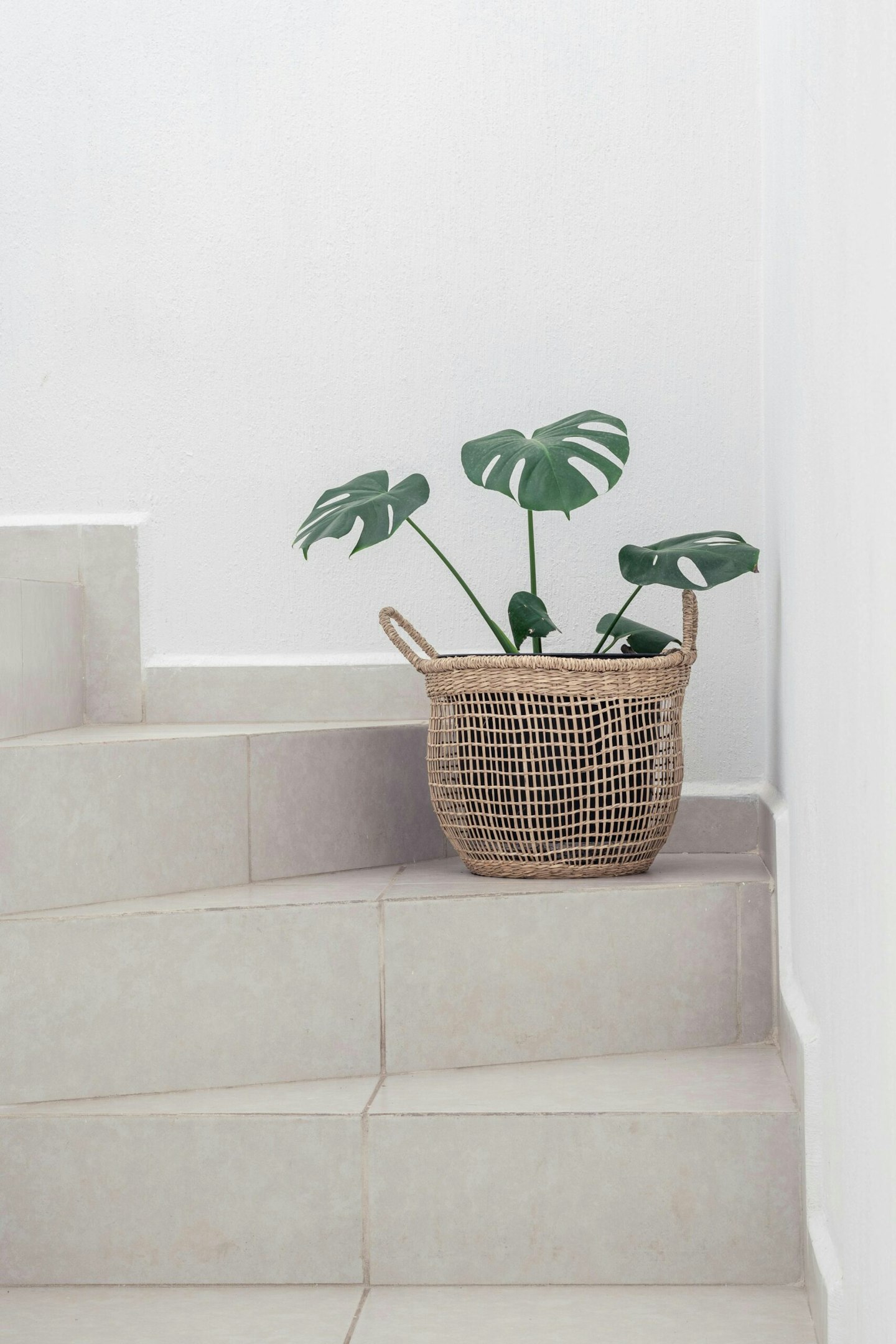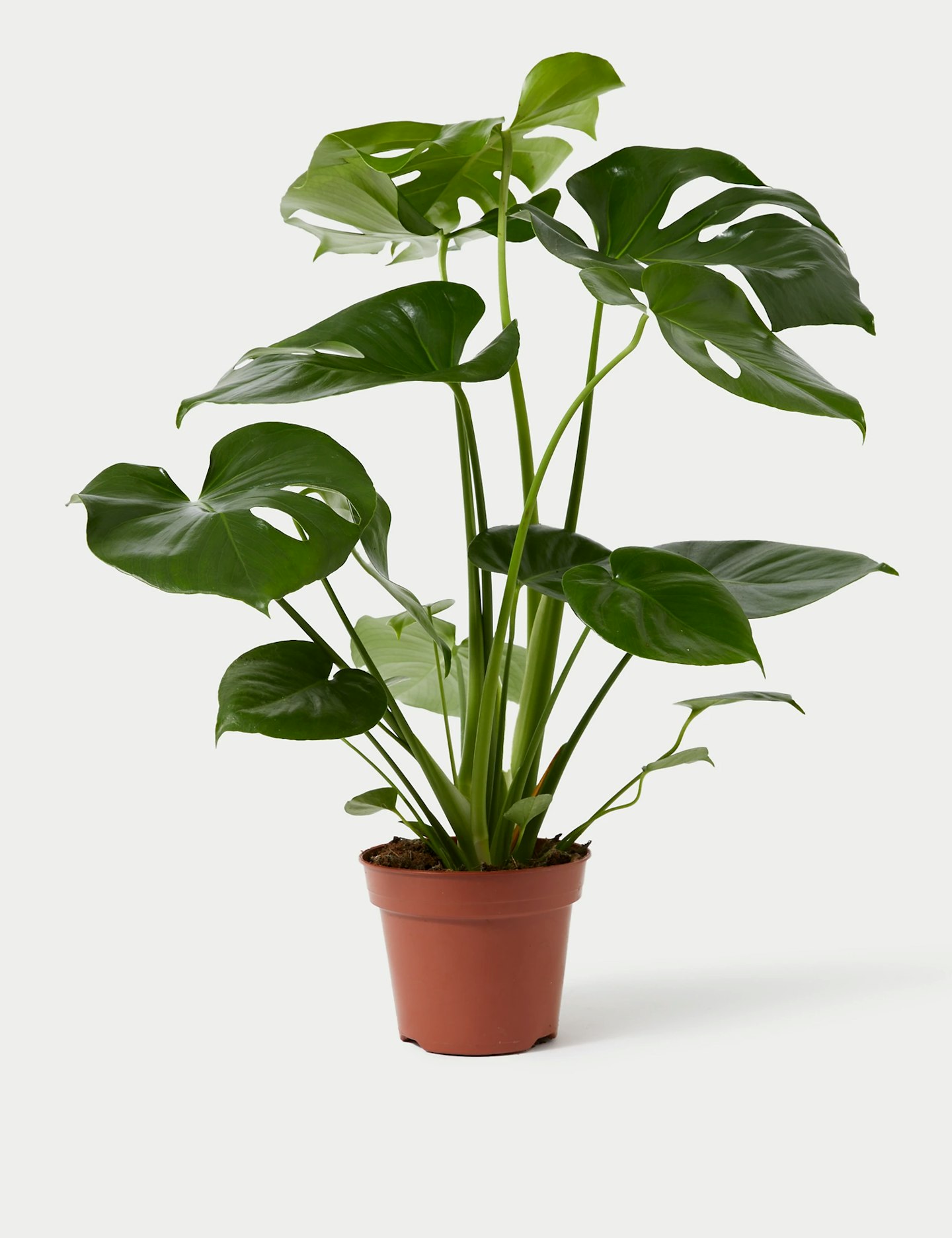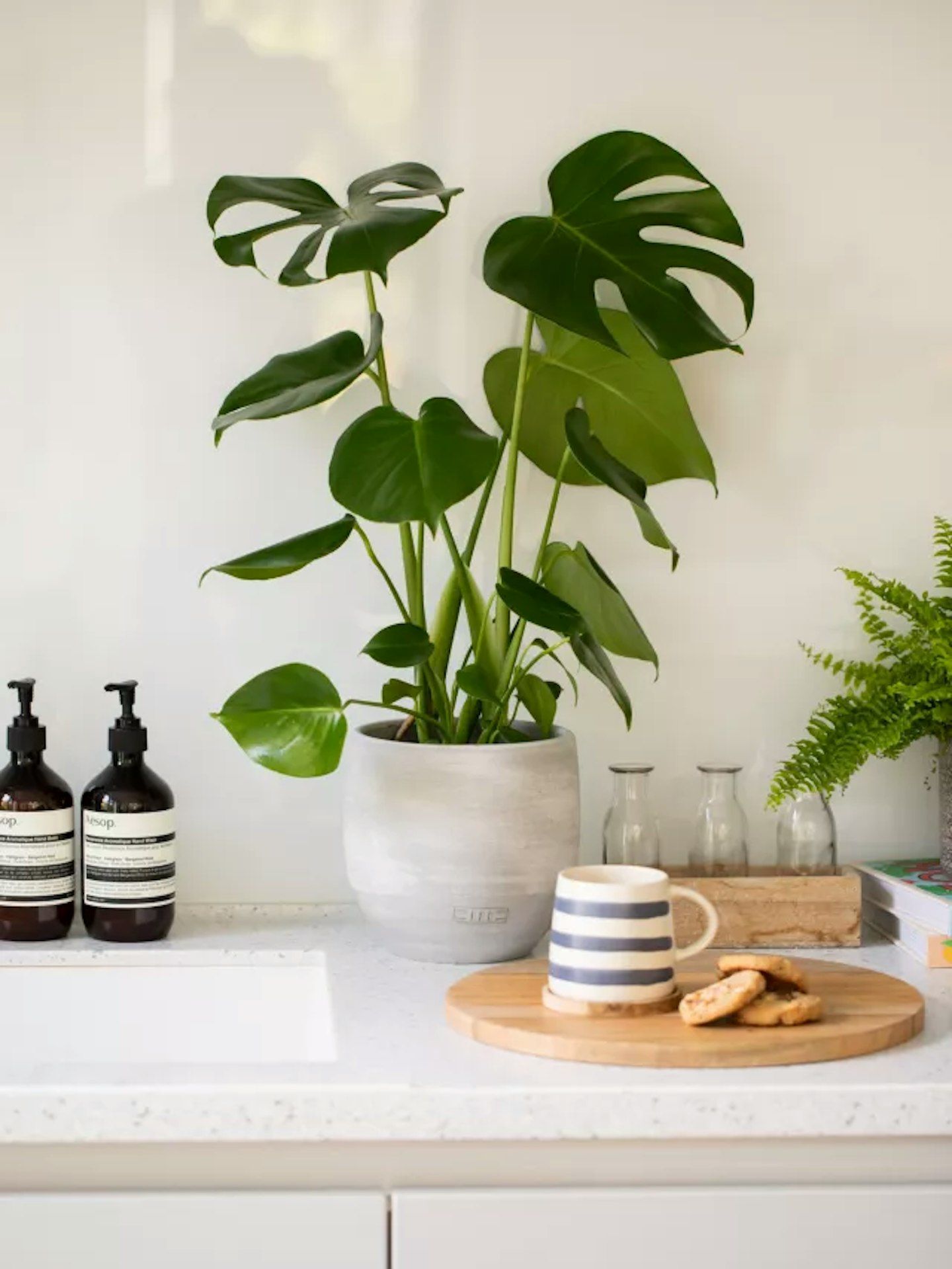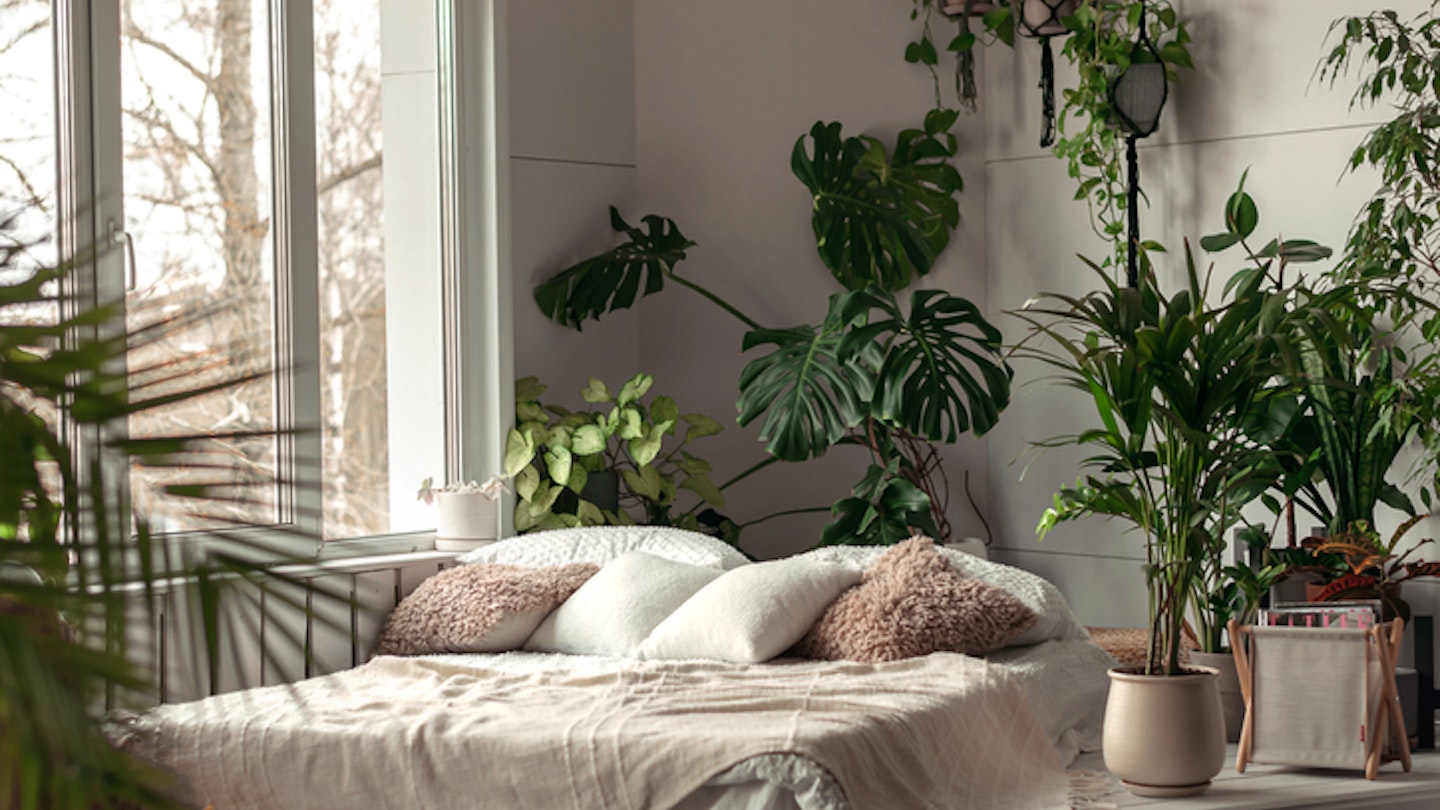House plant trends come and go, but any plant mum will tell you that cheese plants are still one of the trendiest bits of foliage for adding a pop of green to your interiors. And don't just take our word for it - even celebrities, including Elsa Hosk and Eva Longoria, can't get enough.
One of the biggest appeals of cheese plants is that they are pretty low maintenance, making them a good option for both beginners and experienced plant owners looking to elevate their interiors. They don’t need too much watering, and they're extremely adaptable to light needs, making it easy to slot into your home. Plus, their glossy, unique shaped leaves will compliment any interior, whatever your aesthetic.
‘I would always recommend a cheese plant,’ says interior designer Katy Raywood. ‘They are so easy to maintain, good in rooms with light and shadow, and they don't attract insects. Whatever colour scheme you have, a green plant will always make it look more interesting.'
Plus, house plants can work wonders for your mental health. One 2015 study published in the Journal of Physiological Anthropology found that interacting with plants in an indoor setting induces physiological and psychological relaxation, which means reduced stress, lower blood pressure and even improved productivity. It’s no wonder that houseplants are booming in popularity among millennials – they saw the biggest demographic growth in 2021 houseplant sales at 65%, according to Garden Center Magazine.
But knowing where to start with cheese plants can be a bit of a minefield: which type of cheese plant is best? Where is the best place to put your cheese plant? And should they be in shade or sunlight? We’ve answered all your questions below…
Which cheese plant is best?
The most popular type of cheese plant is called the monstera deliciosa, or Swiss cheese plants. It's known for its large, glossy leaves that have holes in, which are commonly thought to resemble a slice of Swiss cheese. They’re also known as custard plants, Indian ivy, or fruit salad plants.
These plants grow pretty quickly and in the wild can reach up to 20 metres high. In the home, you could see leaves that grow up to three feet wide.
Other varieties of monstera you might see in shops and garden centres include monstera epipremnoides, which has long slashes through the leaves instead of holes, and monstera adansonii, has heart-shaped leaves with holes.

Where do you put cheese plants in your house?
A cheese plant is happy in any room in your house - even bathrooms, which are typically tricky spaces for house plants. Since it originates from South American forests, cheese plants thrive in humid environments and will give a jungle feel to your space.
They are also perfect for adding a pop of green to living rooms and bedrooms. 'They are brilliant to create ambience, big shadows and shapes, which I always think is so beautiful,' says Raywood. 'I always have them near a lamp, so in the evening, they cast some lovely shadows.' She adds that floor planters are a great way to show off your cheese plants and make them complement any room.
How do you look after a cheese plant?
The beauty of cheese plants is that they are relatively low maintenance. Generally, they prefer humidity so to keep your plant at its optimum, you could occasionally mist it with water, but they also adapt well to dry, indoor conditions. Patch Plants suggests aiming for temperatures between 15 and 30°C.
One of the most common mistakes people make with cheese plants is over-watering them, which can cause yellow leaves. You should be aiming to water your cheese plant every 1-2 weeks, and allow soil to dry out between waterings.
Cheese plants have epiphytic vines, which means they grow upwards, not out. This means that if your cheese plant ends up growing a lot, it may need a moss pole to climb on. These are used to grow plants upwards, not out.
Do cheese plants like sun or shade?
Cheese plants thrive best with indirect sunlight, which means the best place to put them is near a window. Ideally, this would be a window where the sun won't shine directly onto the leaves, as cheese plants can only tolerate a few hours of direct sunlight a day. They can also survive in darker rooms, but it can mean the recognisable (cheesy) cut-outs on their leaves won't form.
Raywood explains that cheese plants have a tendency to 'grow towards the light.' If this is bothering you. she recommends moving it around depending on where the light is. 'That way, the plant will change shape,' she adds.
Can cheese plants live outside?
In some parts of the UK, cheese plants could thrive in sheltered, frost-free areas which are covered by shade, but it's a lot more straightforward to grow them inside, especially if you're a new plant mum. Given how unpredictable the UK weather can be, these subtropical plants probably thrive best indoors.

What should I do if my cheese plant has yellow leaves?
Yellow leaves are the sign of an unhappy cheese plant, usually as a result of overwatering. Low humidity and dry soil can also cause leaves to turn brown on their edges, which, if left alone, can turn into an entire yellowing.
One way to target yellow leaves is to mist your cheese plant regularly, as this increases the humidity. You can try moving your cheese plant to sunnier spots to see if it improves because too little light can also cause yellow leaves.
However, it's important to remember that yellow leaves aren't always such a bad sign. If your cheese plant is growing new leaves and the yellow ones seem older, then it could just be the result of a natural process, as the plant sheds its old leaves.
Are cheese plants poisonous to cats and dogs?
Yes, they are. This is because cheese plants contain insoluble calcium oxalates, which makes the leaves and stems toxic to cats and dogs. So you may want to keep your cheese plant out of reach of any furry friends.
SHOP: The best cheese plants to buy right now
With is many cheese plants on the market, it can be hard to know where to start. We've selected five of the best ones you can buy right now...
 amazon
amazon This cheese plant is great value for money for its size. Featuring the trademark holes and a height of up to 40-50cm, it makes the perfect beginner addition to any space.
 M&S
M&Swww.marksandspencer.com
M&S is a staple for buying brilliant home items, including plants. This large monstera is 60-80cm tall and 40-60cm wide.
 Waitrose
Waitrose www.waitrosegarden.com
This Waitrose cheese plant wins for convenience. It comes in a chic white pot and three heights - 60cm, 1.2m and 1.7m - so you can find one to fill even the biggest of spaces.
 John Lewis
John Lewis www.johnlewis.com
This John Lewis chase plant comes in a signature ceramic pot, which will look chic in any room. Smaller than some of the other offerings, the estimated height of the cheese plant is 40-45cm, making it perfect for apartments.
 H&M
H&Mwww2.hm.com
H&M Home is one of our favourite haunts, and this cheese plant measures 17cm x 50-60cm. You'll need to add on a decorative pot, too.
 Prickle
Prickle prickleplants.co.uk
Prickle has some of the trendiest plants on the market and their cheese plant is no exception. They have a choice of four stylish, recycled pots in pink, green and white, and three heights - 40-50cm, 50-60cm and 70-80cm.
 Ikea
Ikeawww.ikea.com
At 20cm, this IKEA cheese plant is on the smaller side, but that doesn't make it any less mighty. Plus, it's great new plant mums - IKEA provides all potted plants with nutrient-rich soil, so repotting is not needed until 1 year after purchase. At £19, it's an absolute steal.
